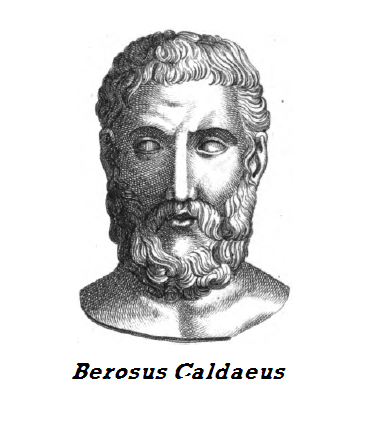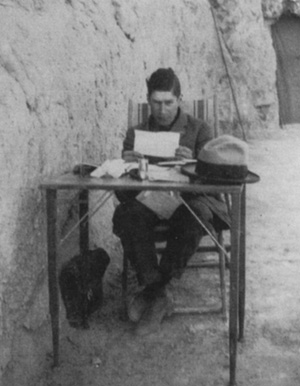|
History Of Sumer
The history of Sumer spans through the 5th to 3rd millennia BCE in southern Mesopotamia, and is taken to include the prehistoric Ubaid period, Ubaid and Uruk period, Uruk periods. Sumer was the region's earliest known civilization and ended with the downfall of the Third Dynasty of Ur around 2004 BCE. It was followed by a transitional period of Amorite states before the rise of Babylonia in the 18th century BCE. The oldest known settlement in southern Mesopotamia is Tell el-'Oueili. The Sumerians claimed that their civilization had been brought, fully formed, to the city of Eridu by their god Enki or by his advisor (or Abgallu from ''ab''=water, ''gal''=big, ''lu''=man), Adapa, Adapa U-an (the Oannes (mythology), Oannes of Berossus). The first people at Eridu brought with them the Samarra culture from northern Mesopotamia and are identified with the Ubaid period, but it is not known whether or not these were Sumerians (associated later with the Uruk period). Timeline ImageSi ... [...More Info...] [...Related Items...] OR: [Wikipedia] [Google] [Baidu] |
Berossus
Berossus () or Berosus (; ; possibly derived from ) was an early-3rd-century BCE Hellenistic civilization, Hellenistic-era Babylonia, Babylonian writer, priest of Bel (mythology) , Bel Marduk, and Babylonian astronomy, astronomer who wrote in the Koine Greek language. His original works, including the ''Babyloniaca (Berossus), Babyloniaca'' (, are Lost literary work, lost, but Literary fragment, fragments survive in some quotations, largely in the writings of the fourth-century CE Early Christianity, early Christian writer Eusebius. Berossus has recently been identified with Bēl-reʾû-šunu, a high priest of the Esagila, Esagila Temple in the city of Babylon, as mentioned in a document from 258 BCE. Name The name "Berossus" likely originates from a theophoric name whose first component was Bel (mythology), Bel, meaning "Lord," which was a common title for Marduk. The original name was either either Bēl-rē’ûšunu, meaning "the god Bel is their shepherd," or Bēl- ... [...More Info...] [...Related Items...] OR: [Wikipedia] [Google] [Baidu] |
Eridu
Eridu (; Sumerian: eridugki; Akkadian: ''irîtu'') was a Sumerian city located at Tell Abu Shahrain (), also Abu Shahrein or Tell Abu Shahrayn, an archaeological site in Lower Mesopotamia. It is located in Dhi Qar Governorate, Iraq, near the modern city of Basra. Eridu is traditionally considered the earliest city in southern Mesopotamia based on the Sumerian King List. Located 24 kilometers south-southwest of the ancient site of Ur, Eridu was the southernmost of a conglomeration of Sumerian cities that grew around temples, almost in sight of one another. The city gods of Eridu were Enki and his consort Damkina. Enki, later known as Ea, was considered to have founded the city. His temple was called E-Abzu, as Enki was believed to live in Abzu, an aquifer from which all life was thought to stem. According to Sumerian temple hymns, another name for the temple of Ea/Enki was called Esira (Esirra). At nearby Ur there was a temple of Ishtar of Eridu (built by Lagash's ruler Ur- ... [...More Info...] [...Related Items...] OR: [Wikipedia] [Google] [Baidu] |
Irrigation
Irrigation (also referred to as watering of plants) is the practice of applying controlled amounts of water to land to help grow crops, landscape plants, and lawns. Irrigation has been a key aspect of agriculture for over 5,000 years and has been developed by many cultures around the world. Irrigation helps to grow crops, maintain landscapes, and revegetation, revegetate disturbed soils in dry areas and during times of below-average rainfall. In addition to these uses, irrigation is also employed to protect crops from frost, suppress weed growth in grain fields, and prevent soil consolidation. It is also used to cool livestock, reduce dust, dispose of sewage, and support mining operations. Drainage, which involves the removal of surface and sub-surface water from a given location, is often studied in conjunction with irrigation. There are several methods of irrigation that differ in how water is supplied to plants. Surface irrigation, also known as gravity irrigation, is the olde ... [...More Info...] [...Related Items...] OR: [Wikipedia] [Google] [Baidu] |
Cities Of Sumer (en)
A city is a human settlement of a substantial size. The term "city" has different meanings around the world and in some places the settlement can be very small. Even where the term is limited to larger settlements, there is no universally agreed definition of the lower boundary for their size. In a narrower sense, a city can be defined as a permanent and Urban density, densely populated place with administratively defined boundaries whose members work primarily on non-agricultural tasks. Cities generally have extensive systems for housing, transportation, sanitation, Public utilities, utilities, land use, Manufacturing, production of goods, and communication. Their density facilitates interaction between people, government organisations, government organizations, and businesses, sometimes benefiting different parties in the process, such as improving the efficiency of goods and service distribution. Historically, city dwellers have been a small proportion of humanity overall, bu ... [...More Info...] [...Related Items...] OR: [Wikipedia] [Google] [Baidu] |
Jemdet Nasr Period
The Jemdet Nasr Period (also Jemdat Nasr period) is an archaeological culture in southern Mesopotamia (modern-day Iraq). It is generally dated from 3100 to 2900 BC. It is named after the type site Tell Jemdet Nasr, where the assemblage typical for this period was first recognized. Its geographical distribution is limited to south-central Iraq. The culture of the proto-historical Jemdet Nasr period is a local development out of the preceding Uruk period and continues into the Early Dynastic I period. History of research In the early 1900s, clay tablets with an archaic form of the Sumerian cuneiform script began to appear in the antiquities market. A collection of 36 tablets was bought by the German excavators of Shuruppak (Tell Fara) in 1903. While they thought that the tablets came from Tell Jemdet Nasr, it was later shown that they probably came from nearby Tell Uqair. Similar tablets were offered for sale by a French antiquities dealer in 1915, and these were again reporte ... [...More Info...] [...Related Items...] OR: [Wikipedia] [Google] [Baidu] |
Early Dynastic Period Of Sumer
The Early Dynastic Period (abbreviated ED Period or ED) is an archaeological culture in Mesopotamia (modern-day Iraq) that is generally dated to and was preceded by the Uruk and Jemdet Nasr periods. It saw the development of writing and the formation of the first cities and states. The ED itself was characterized by the existence of multiple city-states: small states with a relatively simple structure that developed and solidified over time. This development ultimately led, directly after this period, to broad Mesopotamian unification under the rule of Sargon, the first monarch of the Akkadian Empire. Despite their political fragmentation, the ED city-states shared a relatively homogeneous material culture. Sumerian cities such as Uruk, Ur, Lagash, Umma, and Nippur located in Lower Mesopotamia were very powerful and influential. To the north and west stretched states centered on cities such as Kish, Mari, Nagar, and Ebla. The study of Central and Lower Mesopotamia has long ... [...More Info...] [...Related Items...] OR: [Wikipedia] [Google] [Baidu] |
Ur III Period
The Third Dynasty of Ur or Ur III was a Sumerian dynasty based in the city of Ur in the 22nd and 21st centuries BC (middle chronology). For a short period they were the preeminent power in Mesopotamia and their realm is sometimes referred to by historians as the Neo-Sumerian Empire. The Third Dynasty of Ur is commonly abbreviated as "Ur III" by historians studying the period. It is numbered in reference to previous dynasties, such as the First Dynasty of Ur (26-25th century BC), but it seems the once supposed Second Dynasty of Ur was never recorded. The Third Dynasty of Ur was the last Sumerian dynasty which came to preeminent power in Mesopotamia. It began after several centuries of control, exerted first by the Akkadian Empire, and then, after its fall, by Gutian and independent Sumerian city-state kings. It controlled the cities of Isin, Larsa, and Eshnunna and extended as far north as Upper Mesopotamia. The Ur III provinces, from north to south were Sippar, Tiwe, Urum, Pu� ... [...More Info...] [...Related Items...] OR: [Wikipedia] [Google] [Baidu] |
Gutian Period
The Gutian dynasty ( Sumerian: , gu-ti-umKI) was a line of kings, originating among the Gutian people. Originally thought to be a horde that swept in and brought down Akkadian and Sumerian rule in Mesopotamia, the Gutians are now known to have been in the area for at least a century by then. By the end of the Akkadian period, the Sumerian city of Adab was occupied by the Gutians, who made it their capital.M. Molina, "The palace of Adab during the Sargonic period", D. Wicke (ed.), ''Der Palast im antiken und islamischen Orient, Colloquien der Deutschen Orient-Gesellschaft 9'', Wiesbaden: Harrassowitz 2019, pp. 151-20 The Gutian Dynasty came to power in Mesopotamia near the end of the 3rd millennium BC, after the decline and fall of the Akkadian Empire. How long Gutian kings held rulership over Mesopotamia is uncertain, with estimates ranging from a few years up to a century. The end of the Gutian dynasty is marked by the accession of Uruk ruler Utu-hengal ( 2055–2048 BC), marking ... [...More Info...] [...Related Items...] OR: [Wikipedia] [Google] [Baidu] |
Akkadian Empire
The Akkadian Empire () was the first known empire, succeeding the long-lived city-states of Sumer. Centered on the city of Akkad (city), Akkad ( or ) and its surrounding region, the empire united Akkadian language, Akkadian and Sumerian language, Sumerian speakers under one rule and exercised significant influence across Mesopotamia, the Levant, and Anatolia, sending military expeditions as far south as Dilmun and Magan (civilization), Magan (modern United Arab Emirates, Saudi Arabia, Bahrain, Qatar and Oman) in the Arabian Peninsula.Mish, Frederick C., Editor in Chief. "Akkad" ''iarchive:webstersninthne000merr, Webster's Ninth New Collegiate Dictionary''. ninth ed. Springfield, MA: Merriam-Webster 1985. ). The Akkadian Empire reached its political peak between the 24th and 22nd centuries BC, following the conquests by its founder Sargon of Akkad. Under Sargon and his successors, the Akkadian language was briefly imposed on neighboring conquered states such as Elam and Guti ... [...More Info...] [...Related Items...] OR: [Wikipedia] [Google] [Baidu] |








